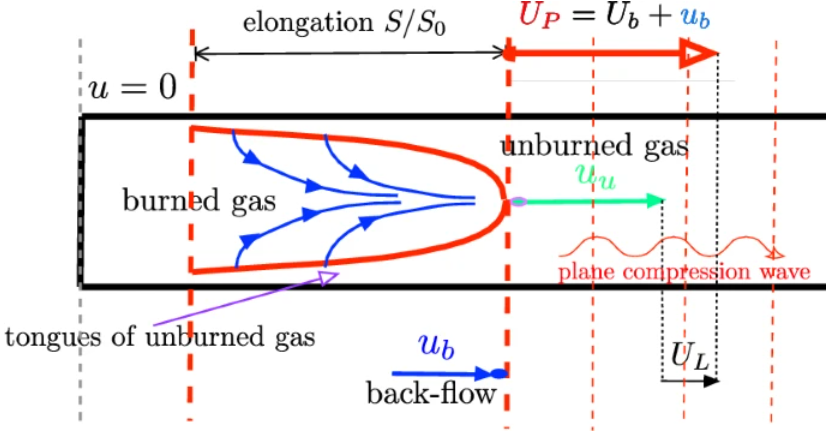EPJ Plus Highlight - Understanding explosive transitions in propagating flames
- Details
- Published on 19 May 2025

Mathematical analysis sheds new light on the mechanisms which unfold as propagating flames transition from one type of combustion to another
As a flame propagates through a mixture of air and flammable fuel, it can suddenly transition from one type of combustion to another. While it initially spreads at subsonic speeds through a process named ‘deflagration’, the flame will suddenly switch to a supersonic motion, driving a shockwave which compresses and ignites the fuel directly in front of it: a process named ‘detonation’. To date, however, some details of the mechanisms which unfold as this transition takes place are still being investigated.
Through new mathematical analysis published in EPJ Plus, Paul Clavin at Aix-Marseille University shows how the ‘deflagration-detonation transition’ (DDT) is triggered through a specific type of explosion, which occurs at a point on the front of the propagating flame. He also shows that this mechanism holds for flames which propagate in a diverse variety of ways.
Through their previous analysis, researchers have discovered that the explosion which triggers the DDT occurs in non-turbulent sections of the propagating flame front. Recent mathematical analysis has revealed that within narrow tubes, this explosion occurs on the tips of elongated ‘laminar’ flames, which don’t display any turbulence. Beyond this, however, the mechanisms underlying the explosion haven’t yet been fully explained.
Through detailed new analysis, Clavin showed that the explosion mechanism also occurs in a variety of more complex cases. These included laminar flames which evolve into turbulent flames as they accelerate; hot spots in the thin ‘boundary layer’ of unburned gas ahead of the flame front, and flames expanding freely in open space.
In each of these cases, Clavin showed that the explosion occurs as the accelerating flame interacts with pressure waves in the surrounding gas: triggering a runaway increase in temperature and pressure. Ultimately, this leads to a tipping point where deflagration suddenly transforms into detonation.
Clavin, P. Physics of the transition to detonation of gaseous flames. Eur. Phys. J. Plus 140, 258 (2025). https://doi.org/10.1140/epjp/s13360-025-06192-5




